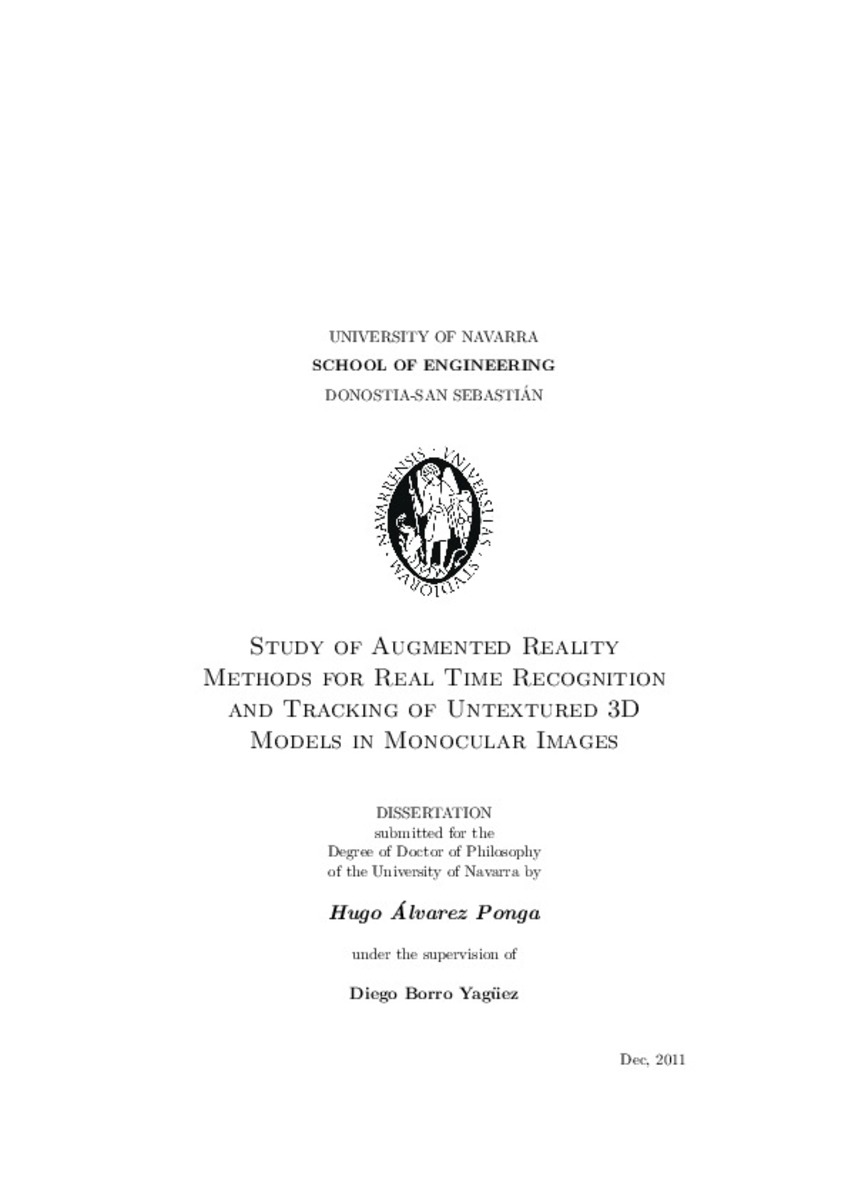Full metadata record
| DC Field | Value | Language |
|---|---|---|
| dc.contributor.advisor | Borro-Yagüez, D. (Diego) | - |
| dc.creator | Álvarez-Ponga, H. (Hugo) | - |
| dc.date.accessioned | 2012-01-30T15:14:25Z | - |
| dc.date.available | 2012-01-30T15:14:25Z | - |
| dc.date.issued | 2012-01-30T15:14:25Z | - |
| dc.date.submitted | 2012-01-09 | - |
| dc.identifier.isbn | 84-8081-154-4 | - |
| dc.identifier.uri | https://hdl.handle.net/10171/20640 | - |
| dc.description.abstract | The main challenge of an augmented reality system is to obtain perfect alignment between real and virtual objects in order to create the illusion that both worlds coexist. To that end, the position and orientation of the observer has to be determined in order to configure a virtual camera that displays the virtual objects in their corresponding position. This problem is known as tracking, and although there are many alternatives to address it by using different sensors, tracking based on optical sensors is the most popular solution. However, optical tracking is not a solved problem. This thesis presents a study of the existing optical tracking methods and provides some improvements for some of them, particularly for those that are real time. More precisely, monocular optical marker tracking and model-based monocular optical markerless tracking are discussed in detail. The proposed improvements are focused on industrial environments, which is a difficult challenge due to the lack of texture in these scenes. Monocular optical marker tracking methods do not support occlusions, so this thesis proposes two alternatives: (1) a new tracking method based on temporal coherence, and (2) a new marker design. Both solutions are robust against occlusions and do not require more environment adaptation. Similarly, the response of model-based monocular optical markerless tracking methods is jeopardized in untextured scenes, so this thesis proposes a 3D object recognition method that uses geometric properties instead of texture to initialize the tracking, as well as a markerless tracking method that uses multiple visual cues to update the tracking. Additionally, the details of the augmented reality system that has been developed to help in disassembly operations are given throughout the thesis. This serves as a tool to validate the proposed methods and it also shows their real world applicability. | es_ES |
| dc.language.iso | eng | es_ES |
| dc.subject | Augmented Reallity. | es_ES |
| dc.subject | Tracking. | es_ES |
| dc.subject | Recognition. | es_ES |
| dc.subject | Real Time. | es_ES |
| dc.subject | Monocular. | es_ES |
| dc.subject | Markerless. | es_ES |
| dc.title | Study of Augmented Reality Methods for Real Time Recognition and Tracking of Untextured 3D Models in Monocular Images. | es_ES |
| dc.type | info:eu-repo/semantics/doctoralThesis | es_ES |
Files in This Item:
Statistics and impact
Items in Dadun are protected by copyright, with all rights reserved, unless otherwise indicated.






